Awful Versions of Ourselves: Creating the Ferengi
With Star Trek: The Next Generation, Gene Roddenberry had a new ship, with a new crew, and he wanted a new villain for them to contend with. He asked Co-Producer Herb Wright to develop a race that would become the series’ recurring antagonist. Wright introduced the new species in “The Last Outpost,” in which the Federation makes first contact with the Ferengi.
Wright recalls, “When Gene asked me to come up with a kind of grand villain for the new Star Trek series, he said he didn’t want to rely on the old stuff.”
Well, take a look at the Klingons; they were basically the Stormtroopers of space and the Romulans were kind of like the SS of space. I went off to noodle what the look and shape and construction of this new villain would be physically and emotionally and to work out what their society would be like; basically I had to come up with a new world. That wasn’t too hard. I just looked around at 80s America where greed was good and Gekko was one of our heroes. I came back to Gene and I said, “Where are the carpet baggers? Where are the robber barons? Where are the guys where every time you turn around they’re buying space ships out from underneath your feet or stealing from you?”
The idea was to create a race of capitalists on steroids.
Our vices
With the Ferengi, the idea is that profit is the most important thing. You always like to come out on top and business rules supreme. Even when you die, the heaven you go to is in fact where they count up how much profit you have and give you a good table in front, while hell was the place that you’d go to penniless and have a damned future in which you would be taken advantage of every five seconds, which is the worst thing the Ferengi can possibly imagine.
One of the reasons Wright was attracted to the idea of a species obsessed with the accumulation of wealth was that they would provide the ideal contrast to Roddenberry’s highly evolved crew.
The twenty-fourth century that Roddenberry envisioned was one in which humanity had worked out its personal and public differences. I saw the inner logic of what Gene was doing. He said he had tried for that in the first show and for all kinds of reasons he was never really allowed to take it to the nth degree. Now he wanted to show us that it was possible for there to be a higher ideal. The real conflicts would have to do with cosmic rays or alien possession things that would alter us against our will. But there was no one who could voice those aspects of greed and corruption and selfishness, so the only people we could relate to on the show were the aliens and the villains, because those were the people who acted like us.
Thus the Ferengi continued Star Trek’s tradition of creating alien races who reflect real groups of people on Earth. Where the Klingons had stood in for the Russians, the Ferengi would stand in for the forces of unrestrained capitalism.
The thing I’ve always thought about a good villain is that, basically, they’re just like us; they’ve got our vices, our faults but they are exaggerated — or at least everyone thinks they’re exaggerated. The reality is they are usually closer to us than we would wish to admit.
Sexists
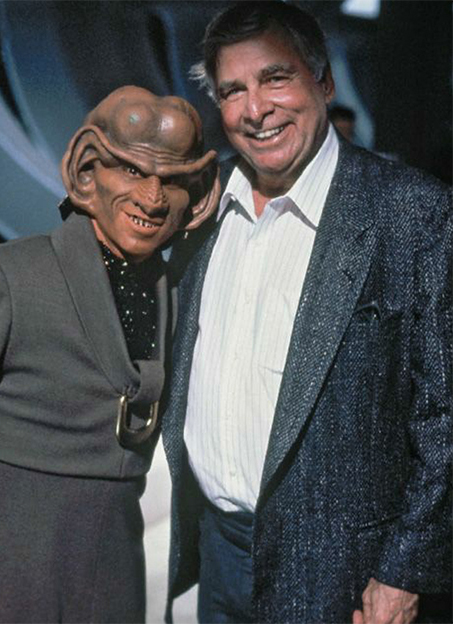
Large parts of Ferengi society were worked out from the premise that they were greedy and unscrupulous. But this was not enough for Roddenberry and Wright, who decided they should give them a few even less attractive traits.
“Sexism came with the package,” said Wright, “and Gene wanted to take that to an ultimate degree.”
He loved that idea enormously. It was his idea that it was by law that no female Ferengi could even own clothing, let alone wear it. The fact that women are not allowed to make profits was decided early on. It’s almost like [a] Victorian industrial revolution kind of attitude toward women, which is they should be home, taking care of kids and they shouldn’t even be wearing clothes because that just gets in the way and it costs money. There’s no profit in that!
Unpleasant though Ferengi might seem, Wright wanted the viewer to recognize that their society did work for them and that humanity must seem as strange to them as the Ferengi did to the crew of the Enterprise.
One of the first things they do when they first come aboard and realize they’re looking at human females is say, “My God, you clothe them? Why would you want to do that?” They’re thinking, “What are these savages doing?” To the Ferengi, it’s such a savage idea to have women clothed and they’re thinking how disruptive it would be to one’s society.
Jealous
Gene Roddenberry also wanted to make sure that, if we stopped to think, we would have reasons to be jealous of the Ferengi.
His whole point was they may be nasty, mean little sons of bitches but, between all the stuff they’ve got and the money, they get all the hot ladies and they know what to do about it; that’s something they’re actually good at. See what happens down the road: Quark has some hot women on his arm. If you look at all those who have got that kind of power, the same thing applies.
This aspect of Ferengi superiority goes to the heart of the race. The idea was that, because they were really more like us than the Starfleet characters,s viewer could find themselves agreeing with them.
“I also wanted to create someone who we could love,” said Wright, “and then hate ourselves for loving them, which is always the dirty little secret of villains.”
Little guys
In order to work out what the Ferengi would look like, Herb Wright worked with concept artist Andrew Probert and they started to produce different drawings. Wright remembers that the original brief he gave Probert was simple:
When I first thought about these guys, I had kind of an image of Scrooge McDuck diving into his gold coins and cackling. I figured that since we had the big guys already with the Klingons, and the medium-sized guys with the Romulans, the little guys who you really have to worry about would be the Ferengi. I wanted us to loathe them and despise them and fear them, and also think they were ridiculous. We played around with a bunch of concepts. I kind of scrunched up my face and popped my eyeballs and bared my teeth and put my hands upbehind my ears. It was probably the most grotesque thing you could get. We always fear the thing that doesn’t look like us. In this case, the idea was to take them away from looking like us, but of course they do look like us in some ways. They’re weird, but they are still humanoid.
In some of the early drawings, the Ferengi have small pointed beards, something Wright approved of because it reminded him of another inspiration for the Ferengi: Shakespeare’s Shylock, who puts business above all else. He went on to say that the beards also had distinct echoes of ancient Babylonian sculptures.
That Middle Eastern look came right off the statues. What was Babylon all about? It’s the same issues of greed and gold that we were trying to endow the Ferengi with. But they were looking a little bit too Assyrian and a little bit too severe because of that. At the end of the day, I felt it was better, and so did Gene, that they would have hairless features.
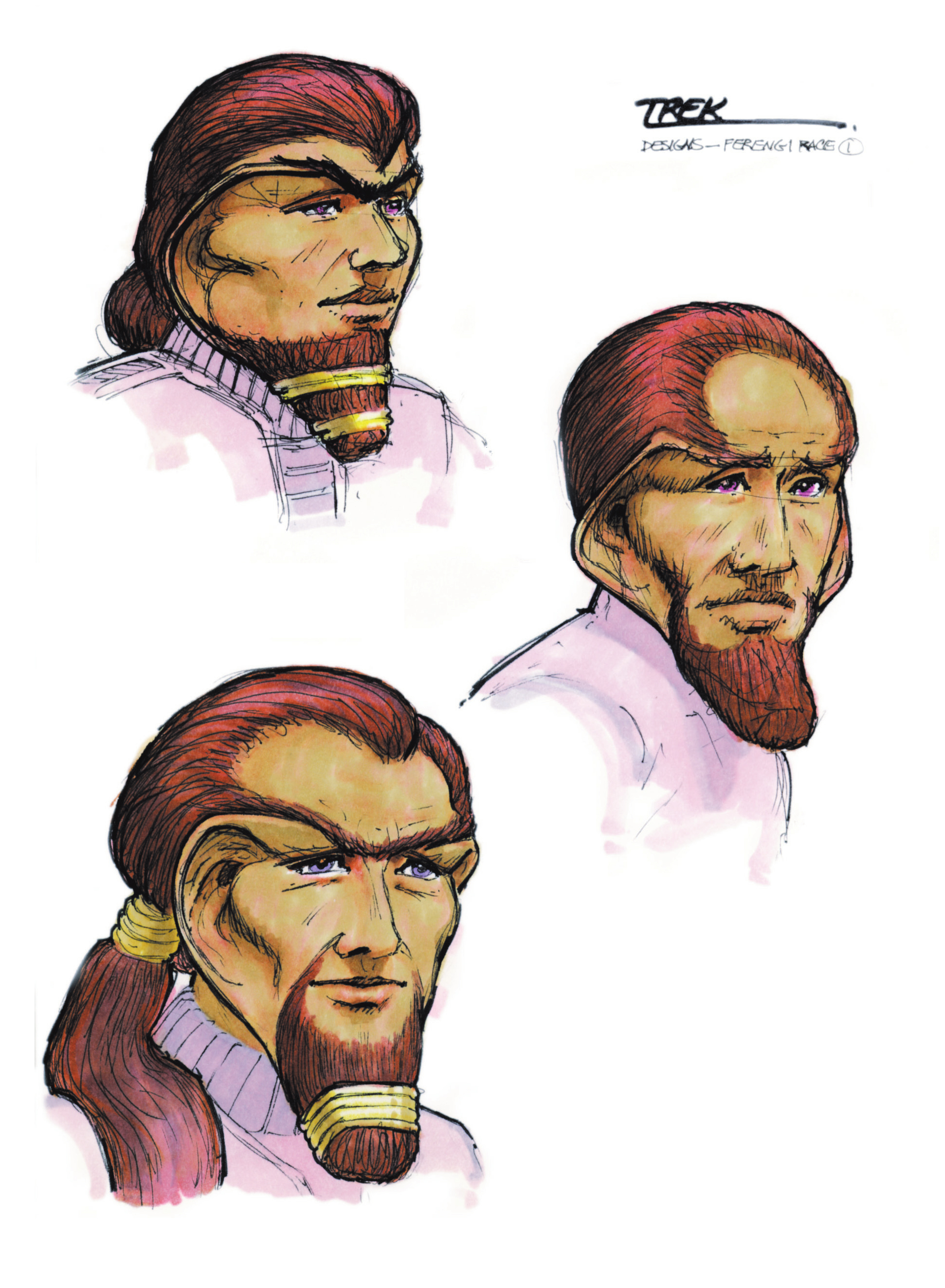
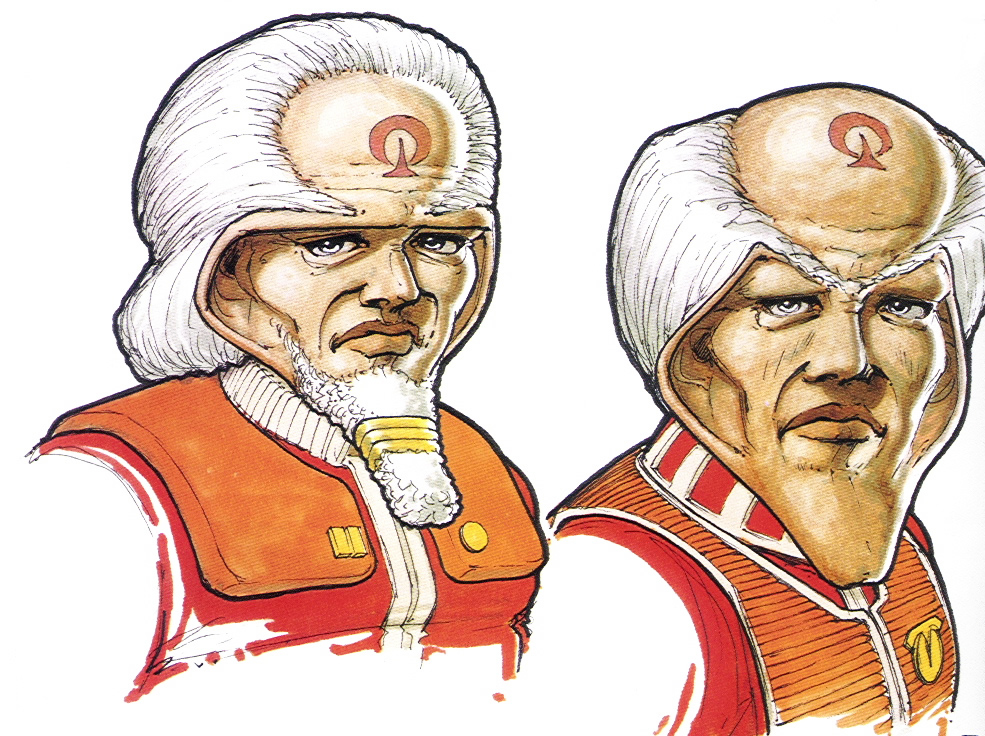


Brain splatters
The baldness also accentuated the prominence of the brain. The Ferengi’s large, four-lobed brains almost led to them becoming more violent.
“I had been deeply affected by the horror film Scanners,” said Wright. “There was a moment when I thought, ‘These are the smartest villains out there; they have to be.'”
They’re businessmen. Jeez, they generate all that electrical steam upstairs; how about if one of the things they could do is make your head explode? The intention was that they’d have this brain-splattering ability and could literally blow out the brains of other people.
The idea was rejected for several reasons.
First, it would be too expensive. Second, it would be too gory for a family show. And third, as Wright put it, “once you’ve done that stunt, who’s going to get in a room with a Ferengi?”
Other ways were explored to make the Ferengi seem more dangerous. “Encounter at Farpoint” mentions a rumor they ate humans.
I was worried about that, because I thought it would allow people to turn around and step away from the larger issues that these villains were about because they could just say, “Oh well, they’re just a bunch of cannibals,” as opposed to saying, “Yeah, they seem silly, but you find yourselves agreeing with them. They get things done, they’re wearing the hot clothes and they’re the ones living life with all the stuff.”
The result was that the Ferengi ended up being taken less seriously than Wright had hoped.
Michael Piller intervenes
Wright left The Next Generation toward the end of Season 1
By Season 2, nobody cared very much for the Ferengi. They were supposed to combine humor with a genuinely aggressive side, but from the moment they appeared on screen, something had been off. The humor had overbalanced the threat and they literally became a laughing stock.
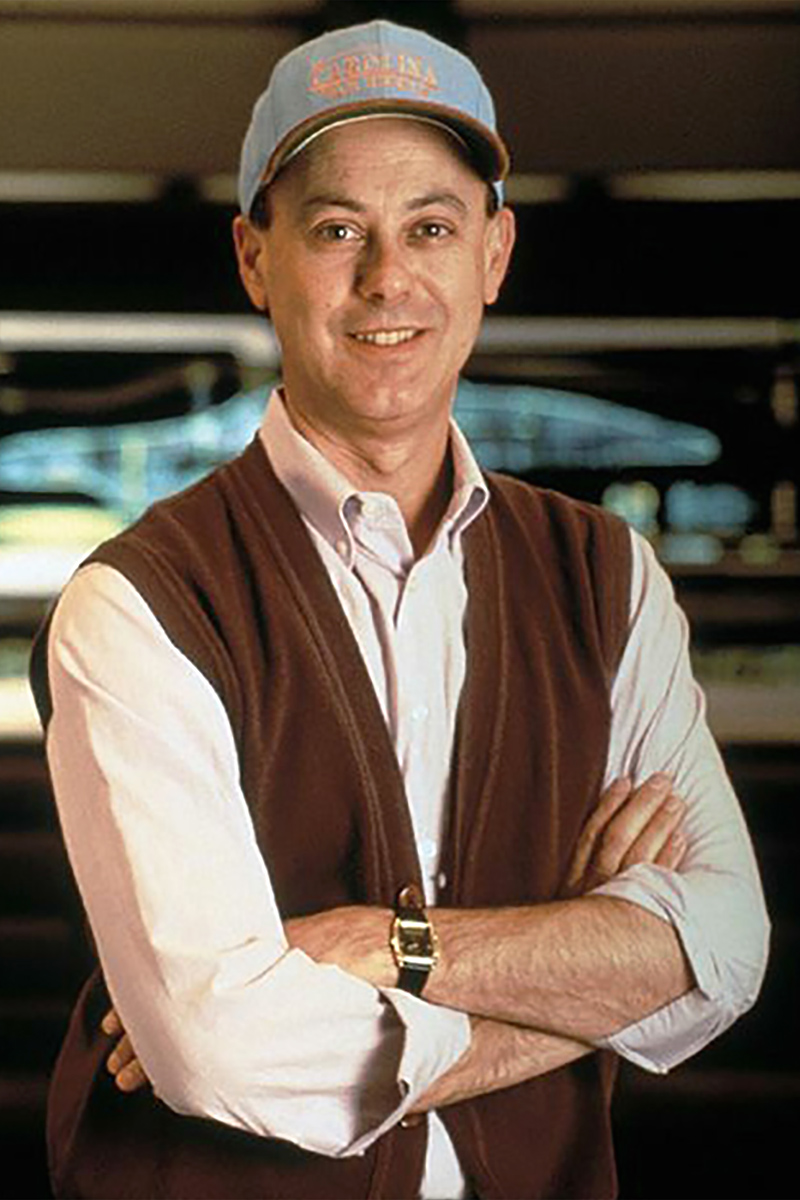
Michael Piller remembered that when he joined the show during its third season, the Ferengi were on the point of extinction. “There’s no question that most people would have been happy to lose them,” said Piller.
In general, the perception was that they were silly, even stupid. Everybody felt that it was a one-joke premise and for all intents and purposes, the joke had been played out.
Piller wasn’t so sure.
I didn’t see anything wrong with some villains that brought smiles to your face.
He made the Ferengi reappear, but less as a threat. They increasingly began to integrate with the Federation.
Like Wright, Piller realized that Ferengi stories could deal with themes that were normally off-limits to the noble Starfleet crew.
“The Ferengi represented a segment of the universe that was not being dealt with in any other way at the time,” he said.
Roddenberry’s vision was very clear: human beings had evolved to a place where they wouldn’t be particularly interested in material goods or petty jealousies. It was impossible to get those kinds of emotions out of our human characters, so we had to use aliens to give us conflict and the ability to comment on the kind of social issues we wanted to explore. My philosophy about the Ferengi was that they were the most human aliens that we had to work with. I think we identified, as Star Trek does so very well, a theme of life that needed commentary and we were able to do that through the Ferengi.
On the Federation frontier

Still little was known about Ferengi society. That changed when Piller joined the production of Deep Space Nine. He and Rick Berman decided to make one of the series regulars a Ferengi.
In the beginning, the station was seen as a frontier town in the tradition of Dodge City and this environment instantly suggested several characters to Piller:
Every frontier town that I’ve ever seen in the movies had a Brian Donleavy character who ran the saloon, who was greedy and was buying land and was cheating at cards and running hookers. To me, it seemed like a natural place for a Ferengi.
Some of the references in the writer’s bible suggest that the Ferengi, who was soon named Quark, would have been quite a malevolent presence with a hand in every illegal activity on the station.
Nevertheless, Piller insisted he was never meant to be a villain:
He has a different agenda to everyone else. I think what you wanted was a strong, adversarial but not unlikable character to play against Sisko. Quark was always meant to be a benevolent adversary; remember, he was going to be a regular character. Look at Dr Smith in Lost in Space: you have a really hard time when one of your regulars is just pure evil. It becomes tiresome.
The lawman and the outlaw
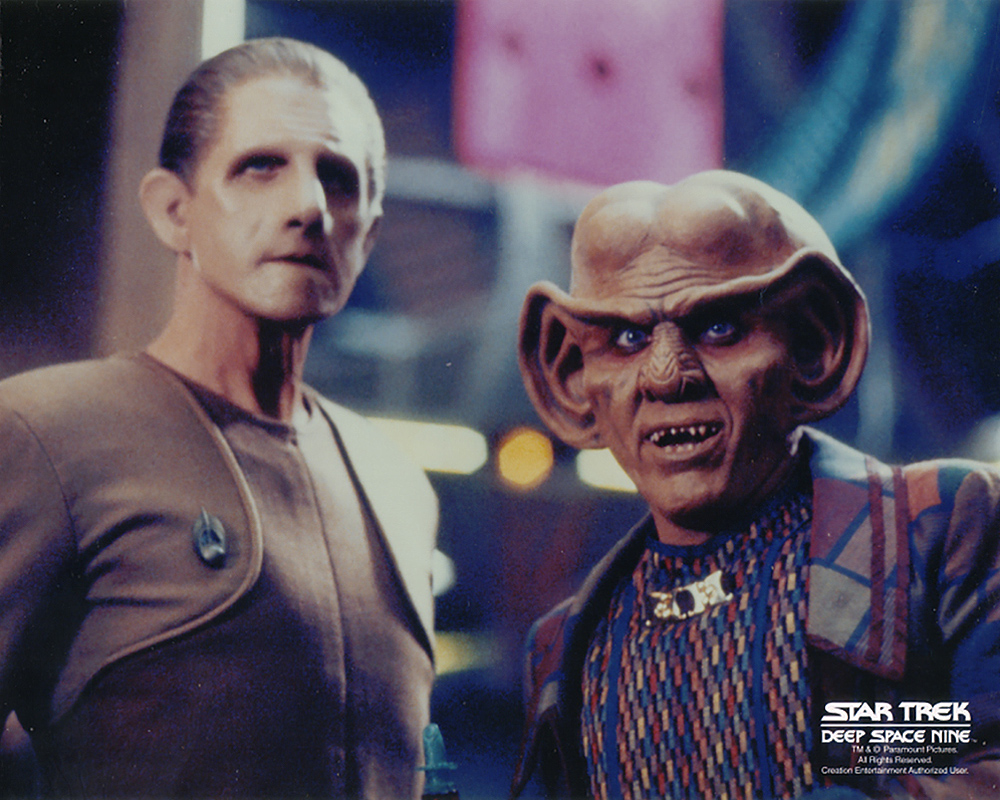
When Deep Space Nine was in the planning stages, Piller intended Quark to be “a thorn in Sisko’s side,” but as he was writing the pilot it became clear to him that Quark was a more natural adversary for one of the other characters: Odo, the lawman of the station.
In Quark and Odo, he found two characters who were philosophical opposites but also inextricably linked by their roles. It soon became clear they had a grudging respect for one another and over the years their many scenes together provided a rich vein of humor.
Obviously conflict is a wonderful thing and conflict with burner is even more fun. When you discover it, you realize you are tapping into a goldmine. We all know what the relationship was between Spock and Dr McCoy in The Original Series; it was an unrelenting conflict, but it always was fun. Nobody set out to create an imitation of that in Deep Space Nine, but whenever you can you look for conflict between two characters, and the lawman and the outlaw are the classic two.
Comic relief
Once Deep Space Nine was up and running, Piller stepped down from day-to-day management of the show and handed the reins to Ira Steven Behr, another veteran of The Next Generation.
Behr is widely credited with rejuvenating the Ferengi, but he had little interest in them when he first joined the show.
“I never took them seriously,” he said, “and no one I know took them seriously. So I was quite surprised when Mike Piller told me that there was going to be a Ferengi on Deep Space Nine.”
The idea became that Quark was still looking for his chance in life. “It’s obvious, really,” said Behr, “the guy’s a bartender.”
You can say that a lot of the Mafiosi led sedate lives and did not live in palatial estates, but they weren’t bartenders; they made sure they never had to wait on people and that’s what Quark was doing. He wanted to get that leg over and prove to everyone and I guess to himself that he had what it took.
At the same time, Quark was supposed to provide comic relief.
I looked at Sisko, I looked at Kira, I looked at Dax — I was looking for something humorous that was going to be clearly different from The Next Generation. Instead of Data walking around making comic remarks, I wanted someone who was going to embody a different sensibility. The Ferengi gave us the chance to bring something to the show that was different from anything we had seen in the other Star Trek series. The Ferengi gave us a chance to see the kind of people who grasp, who reach, but can’t get there.
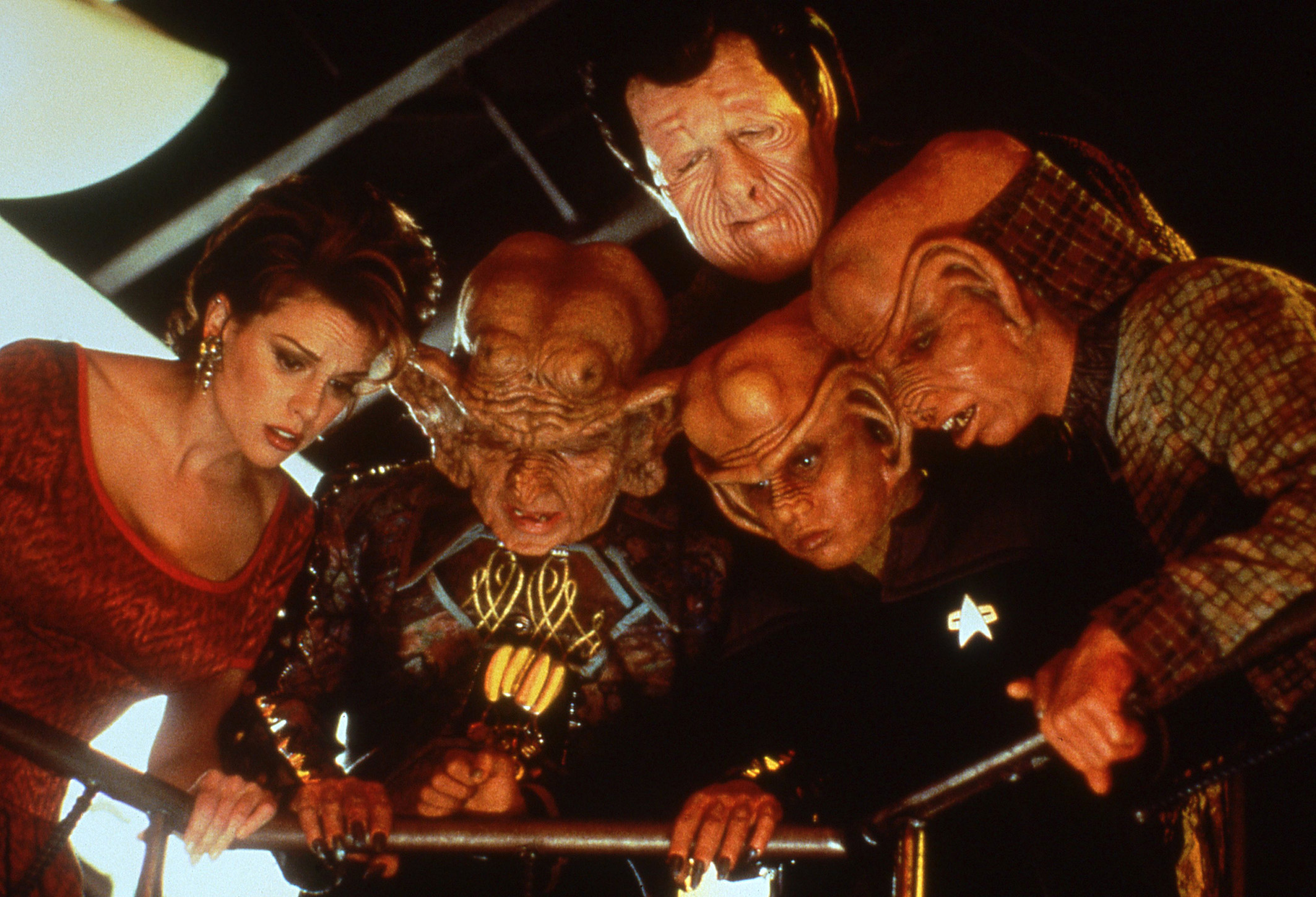

Star Trek is filled with confident, fearless people. Behr felt Deep Space Nine needed someone different.
One of the things that really worried us as writers were the clean deaths in Star Trek and the way we were feeding this rather insidious view of violence and heroism. Something about it did not seem right. We tried to deal with it in a number of shows, but one of the ways we could address it continually was to have Quark. Any time you showed weakness or fallibility, it had to be in alien characters. When you have eight people talking and saying, “We should attack,” or, “These people need our help,” it’s good to have someone saying, “I want to get out of here!”
Like Wright and Pillar before him, Behr discovered the value of having flawed characters on his show. The Ferengi, he said, allowed him to get away with things that didn’t rhyme with Roddenberry’s philosophy.
We could be greedy. We could be in love with latinum. We could be less than perfect. We saw these shows and the Star Trek world didn’t implode.
“The Ferengi opened the door to make everyone not more Ferengi, but,” said Behr, “the irony is, to make everyone more human. That’s the beauty of it. That’s the success of it.”

2 comments
Submit comments by email.